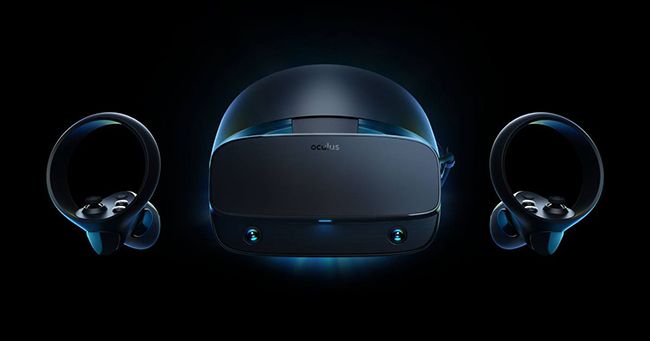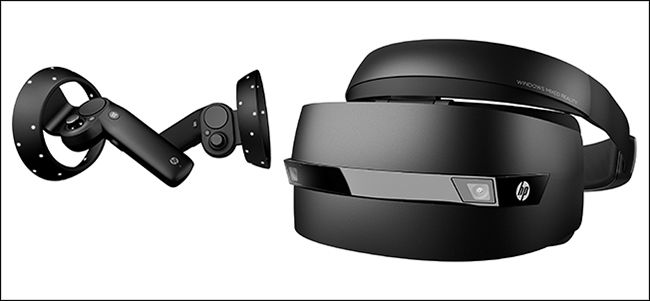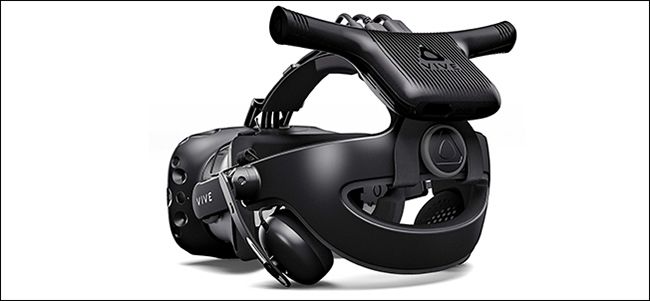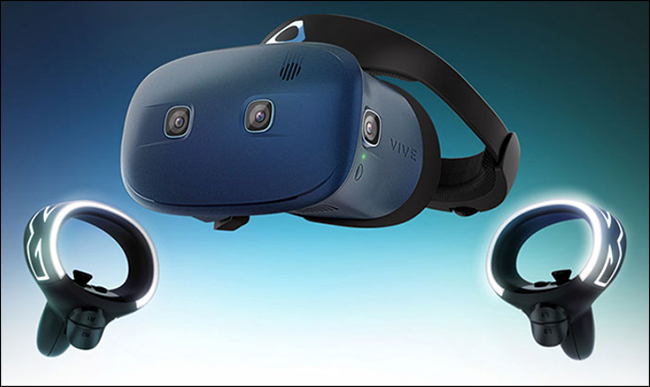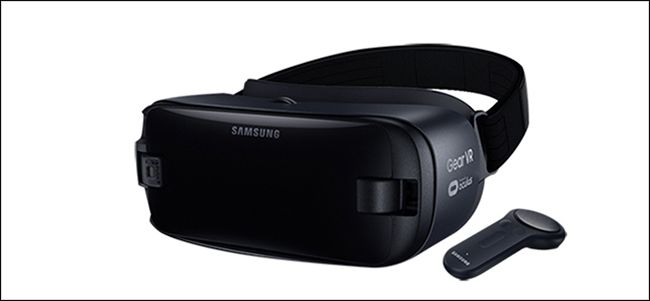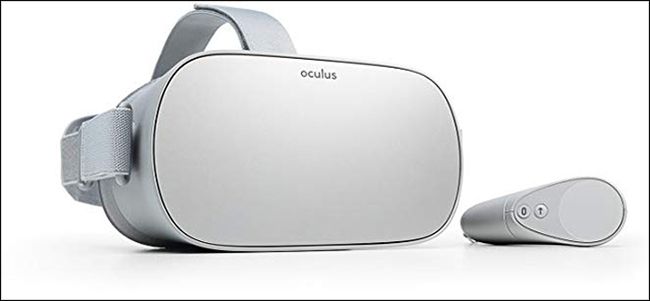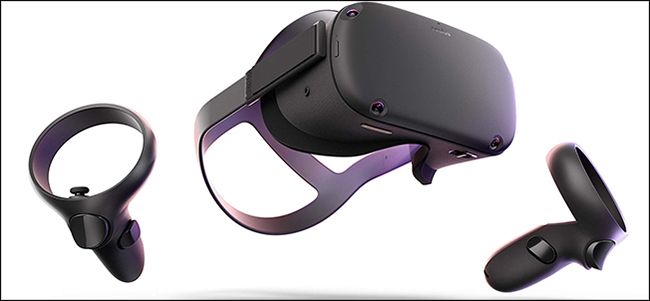Quick Links
In the last three years, virtual reality hasn't exactly set the world on fire. Even so, 2019 shaped up to be VR's best year ever, with new headsets that might have cracked the code on what gamers need.
After all, how many people do you know with a room-scale VR rig in their living room? Probably not many, and according to Statista, fewer than 5 million units were sold in 2018. Clearly, VR isn't the sweeping success some might have hoped for when Oculus and HTC released their high-end PC-tethered headsets in 2016. But that doesn't mean the party is over.
Is this the year you should care about VR? Let's take a look.
It's Still All About Games
When we looked at VR headsets in 2018, the world was much more binary; there were a few tethered headsets like the HTC Vive and Oculus Rift, and a slew of mobile headsets that work in conjunction with a smartphone. A lot can change in a year, and the standalone headsets---which don't require a PC or a phone---that we said were coming have started to arrive.
That said, nothing about the core use case for VR has changed in the last year or two; it's still mostly about gaming. There have been several furtive attempts to turn VR into more than gaming platforms, such as virtual VR desktops (like the Oculus Desktop and the multi-platform Virtual Desktop) and cinema experiences. But virtual desktops are clumsy, and the video platforms are prima facie inferior to real-world home theaters. Why would you watch a movie in a headset---at an inferior resolution and with the meshlike screen door effect we see with most headsets---when you can watch it in the real world at 4K instead?
That said, HTC is also trying to carve out space in the enterprise, with two products aimed at businesses. The HTC Vive Pro offers a step up from the original Vive's graphics and is aimed squarely at corporate clients. So too is the forthcoming HTC Vive Focus, a standalone headset that doesn't need to be tethered to a PC. It's early days for these products, and it remains to be seen if there are enough industrial, academic, and enterprise applications to let VR gain a foothold in those markets. For now, most of the industry is looking at consumers.
Which means it's really about games. On this front, VR delivers a payoff that is rarely short of exhilarating. First-person games like Arizona Sunshine---a zombie shooter---are heart-pumpingly visceral. In fact, they can be overwhelming for some players; there's a difference between watching a horror movie and being in one. But other games have broader appeal. Final Assault, for example, elevates the real-time strategy genre to something like what Star Trek's omnipotent man-child Trelane would choose to do with plastic toy soldiers.
Speaking of Star Trek, there are also simulators, like Star Trek: Bridge Crew, which puts you in command of a starship (and is every bit as geektastically rewarding as it sounds). And then there's the realistic-enough-to-smell-the-saltwater WW2 sub simulator IronWolf VR. There are rhythm games, lightsaber games, and lightsaber rhythm games. If you have played the 2D version of Keep Talking and Nobody Explodes, you owe it to yourself to play the VR version, in which one player handles a bomb in VR while surrounded by teammates back in meatspace, helping to disarm it. And it's hard not love ridiculously charming puzzle games like Waddle Home. Regardless of which game you step into, don't be surprised if you wear a goofy grin the whole time you are in a VR environment---and the thrill doesn't wear off with time.
We wish there were more mainstream developers engaged in creating big, story-driven flagship games, but there's no shortage of gaming innovation, thanks to countless indie developers creating small games for various platforms.
Bottom line: VR gaming isn't a one-trick pony, a gimmick, or a fad. You may tire of a specific game, but the VR experience keeps pulling you back in for more.
Tethered Headsets are Getting Cheaper and Easier
So why doesn't everyone have their own VR rig? Well, there's little doubt that cost and complexity have hampered adoption.
The "tethered" headsets that led the revolution in 2016---the HTC Vive and Oculus Rift---suffered from high cost, but three years in, prices are moderating. Early adopters were willing to spend $798 to get a complete Rift package or $799 for an HTC Vive, but the Oculus Rift S (an upgrade to the original Rift) sells for just $399.
Likewise, the HTC Vive, which is still essentially the same product that HTC released in 2016, sells for $499, down from $799.
That's still a lot of money, and complexity is still an Achilles Heel. Tethered systems require beefy PCs with costly graphics cards. Oculus needs an Nvidia GeForce GTX 1050 Ti or better while HTC demands an NVIDIA GeForce GTX 970. If you're already a gamer, you probably have a PC that meets those specs, but it may be in a small room that's ill-suited to VR---so you either need to move it to the living room or get a second PC. And for the Vive's room-scale VR, you need to mount trackers on the wall. Is it any wonder adoption is sluggish?
If you're committed to the better gaming experience available with a tethered headset, though, there's relief on the horizon. Last year, in cooperation with traditional hardware partners like Lenovo, HP, and Samsung, Microsoft rolled out its "Mixed Reality" headsets (which imply both VR and AR, but at least for now are pretty solidly just VR experiences). But what's interesting is that HP's VR1000-100 MR headset runs on a PC with integrated graphics, saving you hundreds of dollars on the PC it's tethered to.
And if you prefer the Vive's flavor of VR, HTC finally released its wireless adapter late in 2018, so you can now ditch the wires that connect the headset to the PC. It's liberating, but it costs $299.
Inside-Out Tracking Makes VR Simpler
Another exciting innovation is the advent of so-called "inside-out" tracking.
Traditionally, for a headset to know what its orientation and position are (something engineers call six degrees of freedom---or 6DOF), you need external trackers positioned about the room. Oculus does that by placing a pair of sensors in front of the play space; HTC provides a pair of trackers called Lighthouses that need to be wall-mounted on either side of the play area. Both of these solutions are referred to as "outside-in," because external devices are facing into the play area to keep tabs on the headset and controllers.
This year, though, we're starting to see "inside out" headsets, and these are game changers. By placing a set of cameras on the headset designed to provide 6DOF without external hardware, initial setup is greatly simplified, and the headsets themselves become far more portable.
The Oculus Rift S is one such inside-out headset, which should be available right about the time this article published. It sells for $399. And HTC is not far behind, readying the forthcoming HTC Vive Cosmos, which similarly dispenses with the need for Lighthouses.
Mobile Headsets Are Still for VR Tourists
Until recently, when it came to VR, you only had two choices: a pricey tethered system, or a mobile headset that relied on an inserted smartphone to deliver the goods. There's now a third option---standalone headsets---which we'll get to in a moment. But before we get there, it's worth pointing out mobile headsets offer a great value if you want to dip your toes in the VR ocean, especially since you can do it for under $100.
The gold standard for mobile headsets is probably the Samsung Gear VR, which accommodates a variety of Galaxy handsets.
If you're not a Samsung user, there are also options like the Google Daydream View, which works with about a dozen handsets including the Pixel 2, Pixel 3, and models from LG, ASUS, and Huawei. Or, there's the Pansonite 3D VR and the MERGE VR, both of which work with a broader variety of iPhones and Android handsets, and cost in the vicinity of $50.
These headsets rely on your phone for all the processing and graphics work, so the content they display is necessarily much less complicated than tethered headsets. And while the headsets know their orientation in space, they rely on a control on the headset or a handheld controller (standard with headsets like the Gear VR, Daydream View, and Pansonite) to let you move around within the VR environment. Even so, a mobile VR headset is a great way to get your feet wet.
And there's one more mobile VR entry work mentioning -- Nintendo's Labo VR, which is refreshingly different. You might have seen Labo. It's a set of cardboard Switch accessories that kids (or grownups) can assemble and incorporate into Switch gameplay.
So not unlike the original Google Cardboard, you build a Labo VR headset and then insert the Switch where you'd ordinarily slide in a smartphone. It's all sort of whimsical (one of the headsets is shaped like an elephant; another is a bird), and there are accessories like blasters and cameras that you use in short, multiplayer games by taking turns with the headset. In the end, no one (kids or adults) will have an appetite for playing with the Labo VR for hours and hours on end, but it's a surprisingly charming introduction to VR.
Standalone Headsets Might be the Sweet Spot
What's new in the VR universe in 2019 is the increasing availability of standalone VR headsets---models that don't require connection to a PC or a phone, since all the electronics are on board the headset. It's the logical next step in the evolution of VR, and just might be the version of VR that puts a virtual reality headset in every living room.
One of the first standalone headsets to arrive was the Oculus Go, and since it's priced starting at $200, it's an inexpensive way to try a higher quality VR experience than what you can get from mobile headsets without the cost and complexity of a tethered system. Like mobile headsets, the Go isn't a room-scale headset; it doesn't let you freely walk around a large space to interact with your VR universe.
But that's just the beginning. It looks like the future of VR might well be standalone headsets with inside-out tracking---this dispenses with the need for a connection to a PC and eliminates permanent trackers as well. Powerful, high-fidelity VR that's simple to set up and completely portable sounds compelling, and such devices are here. The Lenovo Mirage Solo, priced at $400, includes inside-out tracking and is already available.
And, shipping right about the time this article was originally published, the Oculus Quest is a similar inside-out standalone headset, priced starting at $399. It's perhaps the most exciting option on this list, offering VR with no cables and no PC at a reasonable price point. Unlike the Go, you get the ability to walk around and use controllers, just like you would with a PC-connected headset.
These might prove to be the headsets we've all been waiting for, and may well displace tethered VR systems in the coming years.
It's a VR world
With so much innovation happening in the VR space, we're starting to see headsets morph into products that make sense for average consumers rather than early adopters---inside-out tracking that allows for room-scale movement, standalone headsets that don't require a PC or smartphone, and smart innovations at every price point.
While that doesn't guarantee the success of VR in the home, VR probably isn't going anywhere. We're developing an appetite for VR, as evidenced by pop-up VR experiences in malls and entertainment centers around the country. Dreamscape, for example, offers a handful of VR interactive adventures in the Southern California area with plans to roll out additional locations later this year.
The Void is another VR experience already in a dozen locations, with interactive experiences based on such high-value intellectual property as Star Wars, Ghostbusters, and Wreck-It Ralph. And gaming centers and arcades regularly include VR gaming with Oculus or Vive systems you can rent for a few (pricey) tokens.
What You Should Do in 2019
As you can see, this is a turbulent time to be eyeing a VR headset.
If you want to invest $100 or less into seeing what all the fuss is about, a mobile headset that's compatible with your smartphone is a good stopgap measure---especially if it includes a hand controller, so you don't have to keep a hand on the headset to move about the environment.
But if you're willing to make a more sizable investment, you might want to wait a few months to see how the dust settles on the slate of new products dropping this year. There's no denying that standalone headsets with inside-out tracking like the Oculus Quest feels like the future, but it might take more than one or two generations of these devices before the graphics and performance hold up to the standard set by tethered headsets.
In the meantime, if you can deal with cables and PC system requirements, there's a lot to be said for more traditional tethered headsets like the Rift S and possibly even the forthcoming ($999) Valve Index (which doubles down on inside-out tracking, but promises notably better resolution at a premium price). If you have an interest in VR and haven't yet bought a system, 2019 promises to be a compelling year.




